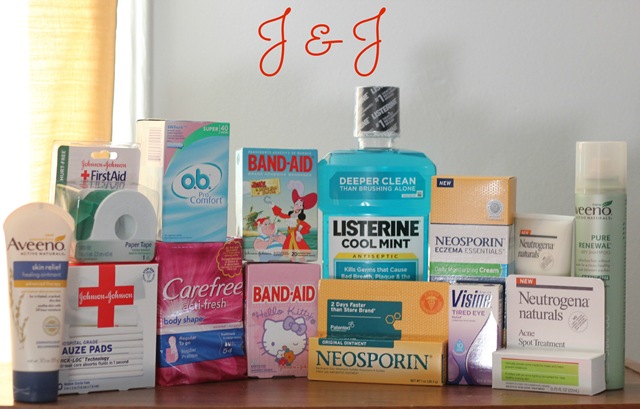Dividend Value Builder Newsletter
- Discover, Compare, and Evaluate Stocks & ETFs Without Emotional Bias -
Johnson & Johnson (JNJ) Stock Analysis

Johnson & Johnson (JNJ) Dividend
The Johnson & Johnson (JNJ) dividend has been paid continuously since 1944 and increased for 63 consecutive years; qualifying the company as a Dividend King, Dividend Aristocrat, and Dividend Champion.
Current Dividend Annualized: $5.20
Why You Might Want to Own the Company:
Johnson & Johnson offers an attractive mix of defensive stability and long-term growth, driven by its high-margin pharmaceutical and medical device segments. Its diversified healthcare portfolio, strong R&D capabilities, and global scale support consistent performance and innovation. Backed by a robust pipeline, world-class brand recognition, and a rare AAA credit rating, JNJ stands out as a resilient blue-chip holding. Its long-standing commitment to dividends and share repurchases makes it particularly appealing to income-focused investors.
Is the stock price a Buy, Sell, or Hold?
Johnson & Johnson (JNJ) Intrinsic Value – Margin of Safety Analysis
(updated October 2025)
Normalized Diluted Earnings Per Share (TTM): $10.35
Free Cash Flow Per Share (TTM): $7.70
Cash Flow From Operations (CFO) Per Share (TTM): $9.98
Estimated Intrinsic Value: $158
Target Buy Price Based on Required Margin of Safety = $158
(Required Margin of Safety Based On Risk Stability Grade:
A = 0%, B = 20%, C = 40%, D = 60%, F = 80%)
Target SELL Price Based on Estimated Intrinsic Value = $221
(Allow Overvaluation Adjusted by Risk Stability Grade:
A+ = 40%, A = 25%, B = 15%, C = 10%, D = 5%, F = 0%)
Risk / Stability Grade: A
A grade indicates a quality company with a strong balance sheet, high earnings quality, and a positive business environment. These stocks require the slimmest margin of safety within the stock universe.
B grade indicates a company with a good balance sheet, good earning quality, and a stable business environment. The margin of safety required should be greater than stocks with an A grade but less than the average stock.
C grade indicates a company with a sufficient balance sheet, at least average earnings quality, and a reasonably stable business environment. The margin of safety required is greater than A & B stocks, but less than D & F stocks.
D grade indicates a company in good standing but has issues that could affect its stability and long term risks. D rated stocks should require a large margin of safety when purchased.
F grade indicates a company with significant issues that are currently affecting its stability and long term risks. Require an extremely large margin of safety for F rated stocks when purchased.
Financial Risk Grade: A
A grade indicates an extremely low probability of a dividend cut. This rating is reserved for companies with strong balance sheets and/or excellent dividend histories.
B grade indicates a very low probability for a dividend cut.
C grade indicates a low probability for a dividend cut and/or average safety risk.
D grade indicates there are issues that should be considered concerning future dividend payments.
F grade indicates serious dividend safety risks. Investors should complete comprehensive due diligence before investing.
Business Quality Grade: B
A grade indicates earnings quality is high or far above average.
B grade indicates earnings quality is good and/or above average.
C grade indicates earnings quality is acceptable or average.
D grade indicates earnings quality is poor and requires thoughtful due diligence.
F grade indicates the quality of the earnings is poor or far below average requiring serious due diligence.
Earnings Report: 9/30/25



AAAMP Portfolios Position Disclosures:
Treasure Trove Dividend (TTD) – LONG
Global Dividend Value (GDV) – LONG
Dividend Growth & Income (DGI) – LONG
Global Value (GV) – None
Global Value Aggressive (GVA) – None
Global Conservative Income (GCI) – LONG
Global High Income (GHI) – None
Company Description
Sector: Healthcare
Industry: Drug Manufacturers – Major
Company Overview:
Johnson & Johnson (NYSE: JNJ) is a global healthcare company engaged in pharmaceuticals, medical devices, and consumer health products. It develops and manufactures treatments in areas such as immunology, oncology, and neuroscience, while its medical devices business serves surgical, orthopedic, and vision care needs. In 2023, J&J spun off its consumer health division into Kenvue, allowing it to focus more on pharmaceuticals and medical technology.
Company Strengths:
Johnson & Johnson benefits from a diverse and resilient business model, with a strong portfolio of innovative pharmaceuticals and medical devices. Its global scale, strong R&D capabilities, and history of steady dividend payments make it a reliable long-term investment. Additionally, its financial strength and ability to navigate market cycles provide stability in the healthcare sector.
Company Challenges:
J&J faces challenges from patent expirations, regulatory scrutiny, and pricing pressures in the pharmaceutical industry. Legal risks, including ongoing lawsuits related to past consumer health products, pose financial uncertainties. Additionally, competition from biotech firms and evolving healthcare policies can impact its future growth and profitability.
Dividend Value Builder Membership (24 Issues) - $199/Yr.
Minimize Large Portfolio Drawdowns
Invest With Confidence In Less Time - Manage Your Portfolio Without Behavioral Errors
Disclaimer:
While Arbor Investment Planner has used reasonable efforts to obtain information from reliable sources, we make no representations or warranties as to the accuracy, reliability, or completeness of third-party information presented herein. The sole purpose of this analysis is information. Nothing presented herein is, or is intended to constitute investment advice. Consult your financial advisor before making investment decisions.
